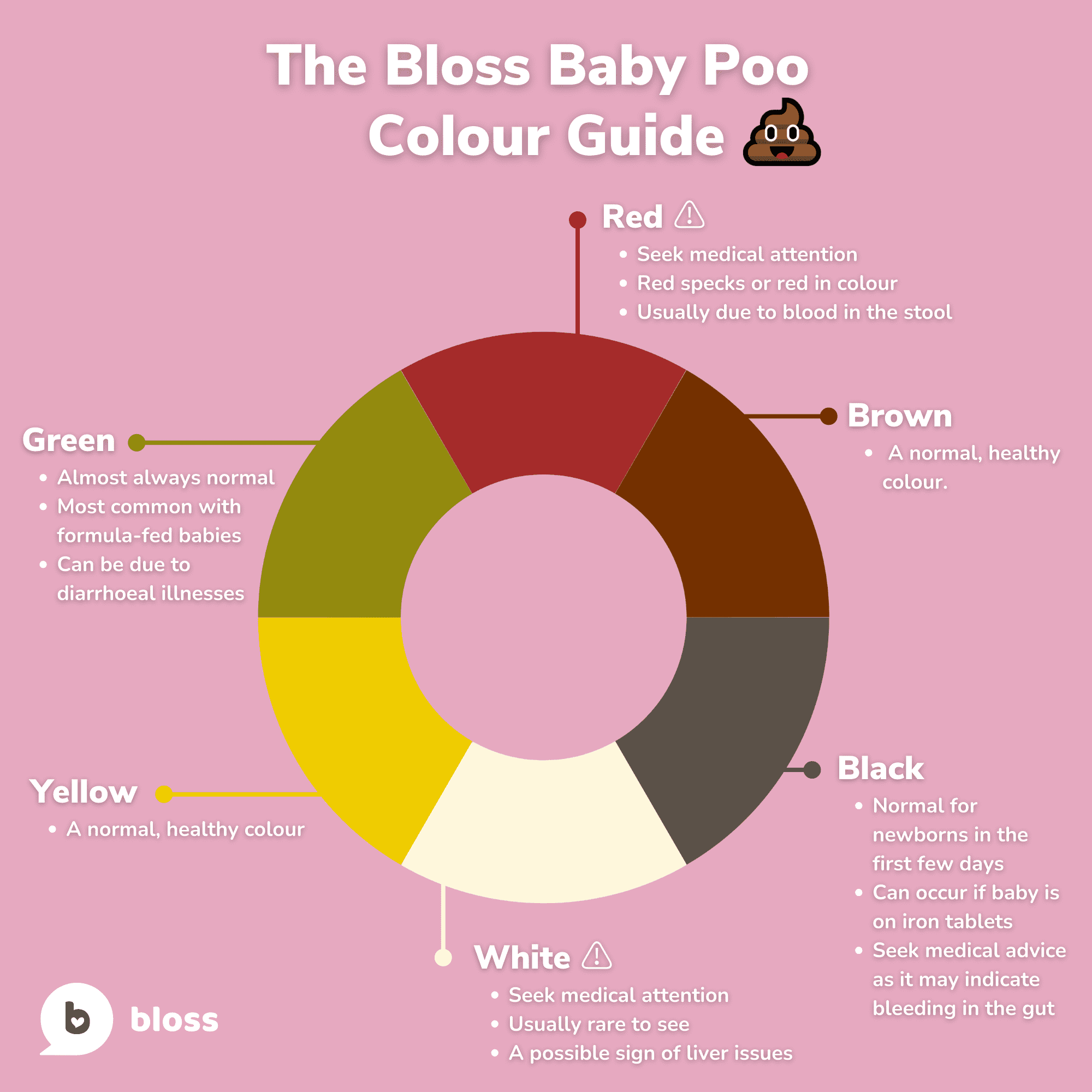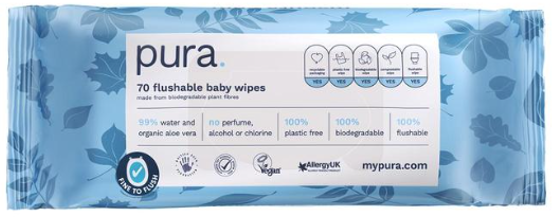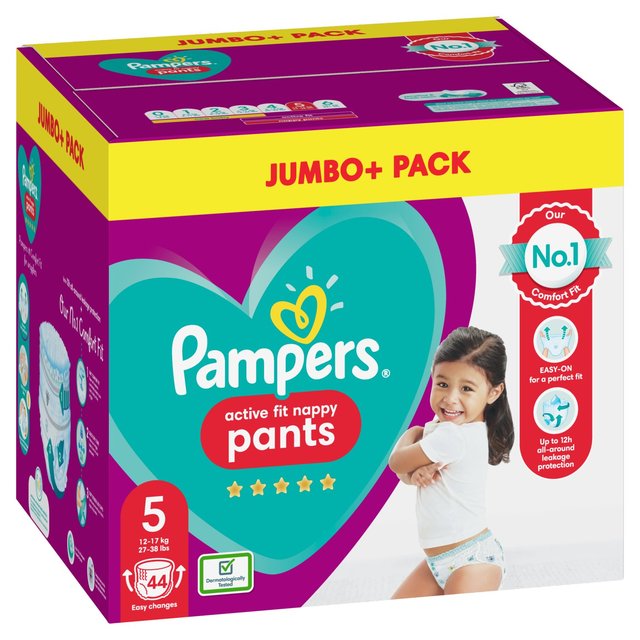The Full Scoop on Newborn Poop : Your Guide to Baby Poo
Becoming a new parent is exciting! That newborn baby smell, the snuggles and finally the chance to completely take in your baby from top to toe.
Whilst there are so many things to love about babies, with it comes a wealth of new challenges to navigate.
The ONE question I am asked by almost ALL parents when it comes to their baby’s bowel habits is: “Is this normal?”
How can such a tiny thing create so much MESS? As a parent you WILL be changing many, many nappies over time – particularly during those early days, so it’s important to be prepared and know what to expect, what is normal and when to seek help.
Baby’s First Poo
Your baby’s first poo in their nappy is probably going to come as the biggest surprise to you and you will wonder how on earth your baby managed to produce it!
Baby’s first poo is otherwise known as meconium – a gooey, black, tar-like, sticky substance.
When a baby is in the womb, they swallow amniotic fluid containing bile, mucus, lanugo (baby hair) and skin cells, which is what meconium is made of. Almost 90% of babies will pass meconium within the first 12 hours of birth and between 8-10% will pass meconium during labour – if this happens it is important you discuss this with your baby’s midwife or paediatrician.
It is also crucial that ALL babies pass meconium within the first 24 hours of being born, as failure to do so could be a sign that there are more serious stomach problems and it is advisable to consult a doctor to arrange tests for your baby.
Baby’s poo – what’s normal?
You will be pleased to know that there is no such thing as a ‘normal bowel habit’ for babies.
Each baby will have their own pattern that will gradually change as the baby grows and transitions from milk to solids. It will take most parents a few weeks to scrutinise the contents of their baby’s nappy to really appreciate what is considered ‘normal’ for their baby (in terms of colour and texture) and when to expect poos.
How often your baby will poo can vary depending on many factors, including how your baby is fed, whether they are well and how old they are. Remember, everyone poos and a healthy gut is important for your baby!
Breastfed baby poo vs formula-fed baby poo
Generally speaking, exclusively breastfed babies tend to poo more often and produce more liquid stools in the first three months of life. It is not uncommon for breastfed babies to poo after every feed in the first few weeks of life. This means that in those early weeks, babies can produce up to 12 poopy nappies a day and that is a lot!
By around 4 months of age, babies will produce between 2-4 dirty nappies a day. However, in some breastfed babies, patterns in bowel movement can differ and they can go several days without needing to poo.
As long as the baby continues to feed and isn’t in discomfort when doing a poo, infrequent pooing is nothing to worry about. In fact, studies show that breastfed babies are 3.5 times more likely to poo infrequently than formula-fed babies.
Formula-fed babies have a more predictable pattern of pooing and generally poo less than breastfed babies. During the first 6-8 weeks of life, they poo on average 4-5 times a day and by the time they reach 3 months of age, it decreases to 1-2 poos a day.
Pooing a Rainbow!
If there’s one universal parenting truth, it’s that parents are always amazed at the various different colours of poo their baby produces! From black, green and orange to red and bright yellow, babies produce many different colour stools and it’s really important to know what’s normal, what isn’t and when you should seek help.
During the first few days of life, a baby’s poo will change from the black meconium to green before eventually becoming mustard yellow. This is true, whether the baby is formula or breastfed. In some formula-fed babies, the poo may be a darker yellow or even tan in colour.
Breastfed babies tend to produce poo that has a more ‘seedy’ texture whereas formula-fed babies produce poo that is like the consistency of peanut butter. By the time babies reach around 16 weeks, there is very little difference between the textures and consistency of both breastfed and formula-fed baby poo.
A guide to different colour poos
- Black
You can expect black poo in the first few days of a baby’s life. Black poo can also occur in babies that are taking iron tablets. If you notice black poo and your baby is older and not receiving iron tablets, then it’s important you consult a doctor, as black poo could be a sign of bleeding in the baby’s gut and will need further examination.
- Red
If you notice specks of red in a baby’s poo or it looks red in colour, then this could indicate blood in the baby’s nappy. Again, it’s important to seek medical attention urgently to be examined.
In some instances, babies can pass redcurrant-like stools which are more serious and would also require urgent medical attention.
- White, Grey or Pale
Whilst these poo colours are rare, they can indicate a problem with the liver or gallbladder. If you notice these colours in a baby’s nappy, please seek medical advice.
- Green
Reassuringly, green poo is almost always normal! It is more common in formula-fed babies and occurs more often when babies have a diarrhoeal illness.
This is because the poo spends little time in the digestive tract and doesn’t have time to acquire the characteristic yellow/brown colour.
Occasionally green poo may be present with some mucus and if this is happening frequently and is combined with poor weight gain, increased fussiness, passing lots of smelly wind and explosive poos, it may indicate that your baby has a cow’s milk protein allergy. If you suspect this is the case with your baby, you should consult with a doctor.

Moving onto solids
Once babies begin to wean, their poo really can be any colour. Remember: what goes in one end, WILL come out the other!
Weaning can produce baby poo that is a wonderful array of colours; blueberries, cranberry juice, beetroots and spinach are all common culprits that can change the appearance of poo.
Occasionally, some medicines your baby may be taking can also change the colour of their poo (eg. the antibiotic, amoxicillin may turn your baby’s poo red). Don’t forget, if you’re ever unsure, it’s always advisable to seek medical attention.
Too much or too little poo?
Whilst I don’t expect you to keep a record of every poopy nappy your baby produces, it’s important that as parents you know what is normal for your baby, as a change can indicate that your baby isn’t well.
By far the most common change in poo habits is diarrhoea. Diarrhoea is characterised by watery-like poo that happens more frequently than what is deemed normal for your baby. Babies may have diarrhoea after their rotavirus vaccine or if they have a viral infection. If you do notice more watery poos from birth, then this may be a sign of a cow’s milk protein allergy and intolerance in your baby.
Diarrhoea in a baby should not last more than a day or two. If it persists beyond this, again, please seek help as babies can become dehydrated very quickly.
If your baby is pooing less than three times a week, it may be a sign that your baby is constipated. Constipation is more common in babies that are formula-fed than those that are breastfed. It occurs more readily around weaning time or if formula is introduced to a previously breastfed baby.
Signs that your baby is constipated include:
- Discomfort or excessive straining when passing poo (normally if a soft poo is passed)
- Hard poo in the nappy
- Very smelly farts
- Refusal to feed
- Firm tummy
If you suspect your baby is constipated, then there are lots of things you can try at home, such as a tummy massage and cycling leg movements. If your baby is under 6 months old, you should see your doctor for tips on how to manage constipation.
If your baby is over 6 months old, then try offering foods such as prunes, pears or plums and ensure your baby has a diet rich in fibre.
The final scoop!
Hopefully, this brief insight into the world of baby poo has helped reassure you.
Don’t worry, I’m not expecting you to examine the contents of your baby’s nappy day in day out, but having a rough idea of what is normal for your baby is a good way to understand baby poo.
It’s important to remember most babies will happily poo away with very little wrong with them. However, it’s equally important to know what changes in your baby’s poo can mean and when to seek urgent help.
Above all, don’t forget to trust your parental instinct and get medical advice if you are ever worried. Keep this baby poo guide close to hand and remember your baby’s poo is a natural indication of their gut health.
Parenting is as joyful and colourful as the contents of your baby’s nappy! However, that doesn’t mean you won’t encounter challenges along the way. If you feel worried about your baby’s health, please discuss your concerns with a healthcare professional.
Remember: we are all part of your village and here to help!
This sponsored article was written by Dr Kiran Rahim, NHS doctor specialising in baby, child and adolescent health – July 2022

Bloss has partnered with Ocado this Summer to make looking after your family that little bit easier – especially if you’re a first-time parent and could do with a helping hand!
Stock up on parenting essentials like Pura Baby Wipes and enjoy great Summer deals on their Pampers Nappy range.
Get two Jumbo+ packs of Pampers Active Fit Nappy Pants (size 5 or size 6) for £18 or two Jumbo+ packs of Baby-Dry Nappies (size 5) or Nappy Pants (size 6) for £19. 
You can also save ⅓ on Pampers Size 2 Harmonie Nappies (4-8kg) when you order before 2nd August 2022.
You’ll find quick and easy recipe ideas on the Ocado site that are guaranteed to please the whole family and can be ready in under 30 minutes, making Summer dinners an absolute winner.
Add ingredients to your Ocado shopping list in advance for a speedier check out process, and reserve a regular weekly or fortnightly slot with Ocado Reserved. They’ll place a suggested food order based on what you usually buy to guarantee your slot, but you can edit this whenever you like to ensure you get what you need when you need it.
For anything else your family needs this Summer, head to bloss and Ocado to discover all the ways we can support you on your parenting journey.
bloss x Ocado

Article References:
Arias A, Bennison J, Justus K, Thurman D. Educating parents about normal stool pattern changes in infants. Journal of Pediatric Health Care. 2001 Oct 31;15(5):269-74.
Steer CD, Emond AM, Golding J, Sandhu B. The variation in stool patterns from 1 to 42 months: a population-based observational study. Archives of disease in childhood. 2008 Aug 1.
Lemoh JN, Brooke OG. Frequency and weight of normal stools in infancy. Archives of disease in childhood. 1979 Sep;54(9):719.
Weaver LT, Steiner H. The bowel habit of young children. Archives of disease in childhood. 1984 Jul 1;59(7):649-52.
Weaver LT, Ewing G, Taylor LC. The bowel habit of milk-fed infants. Journal of pediatric gastroenterology and nutrition. 1988 Jul 1;7(4):568-71.
The National Health Service (NHS). Constipation | Breastfeeding Challenges | Start4Life. https://www.nhs.uk/start4life/baby/feeding-your-baby/breastfeeding/breastfeeding-challenges/constipation/
The National Health Service (NHS). Constipation And Bottle Feeding | Feeding Your Baby | Start4Life. https://www.nhs.uk/start4life/baby/feeding-your-baby/bottle-feeding/bottle-feeding-challenges/constipation-and-bottle-feeding/#anchor-tabs
National Institute for Health and Care Excellence (NICE). Constipation in children and young people: diagnosis and management [CG99]. https://www.nice.org.uk/guidance/cg99/chapter/1-Guidance#diet-and-lifestyle
The British Medical Journal (BMJ). Best Practice: Constipation in children. https://bestpractice.bmj.com/topics/en-gb/784/diagnosis-approach




Leave a Comment
You must be logged in to post a comment.